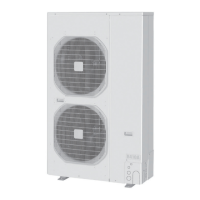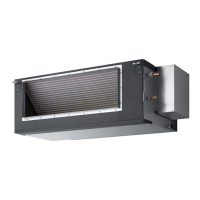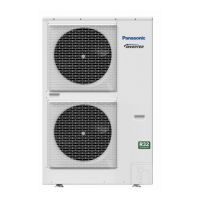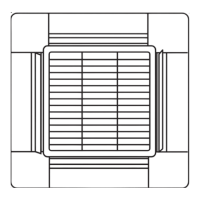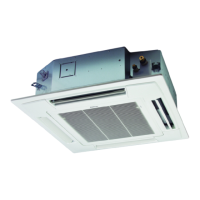1-73
1
Fig. 1- 55
Fig. 1- 56
60
Flare Process
260
190
Flare Process
The ø25.4 gas main will not pass easily into the opening for coolant pipes in the pipe cover, so make sure you
connect the ø25.4 pipe with the ø19.05 pipe outside of the outdoor unit.
(2) Tightly connect the indoor-side refrigerant tubing
extended from the wall with the outdoor-side tubing.
(3) To fasten the flare nuts, apply specified torque.
When removing the flare nuts from the tubing connections,
or when tightening them after connecting the tubing, be
sure to use 2 adjustable wrenches or spanners. (Fig. 1- 55)
If the flare nuts are over-tightened, the flare may be
damaged, which could result in refrigerant leakage and
cause injury or asphyxiation to room occupants.
When removing or tightening the gas tube flare nut,
use 2 adjustable wrenches together: one at the gas tube
flare nut, and the other at part A. (Fig. 1- 56)
For the flare nuts at tubing connections, be sure to use the
flare nuts that were supplied with the unit, or else flare nuts
for R410A (Type 2). The refrigerant tubing that is used must
be of the correct wall thickness as shown in the table below.
Tube diameter
Tightening torque
(approximate)
Tube thickness
ø6.35 (1/4")
14 – 18 N · m
{140 – 180 kgf · cm}
0.8 mm
ø9.52 (3/8")
34 – 42 N · m
{340 – 420 kgf · cm}
0.8 mm
ø12.7 (1/2")
49 – 55 N · m
{490 – 550 kgf · cm}
0.8 mm
ø15.88 (5/8")
68 – 82 N · m
{680 – 820 kgf · cm}
1.0 mm
ø19.05 (3/4")
100 – 120 N · m
{
1000 – 1200 k
g
f · cm
}
1.2 mm
Because the pressure is approximately 1.6 times
higher than conventional refrigerant pressure,
the use of ordinary flare nuts (Type 1) or thin-walled
tubes may result in tube rupture, injury, or asphyxiation
caused by refrigerant leakage.
Outdoor unit
Torque wrench
Spanner
Indoor unit
A
Sec1.indd 73 2014/11/07 10:28:10
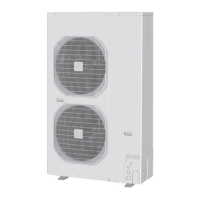
